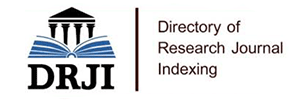
Journal Basic Info
- Impact Factor: 1.995**
- H-Index: 8
- ISSN: 2474-1647
- DOI: 10.25107/2474-1647
Major Scope
- Vascular Surgery
- Otolaryngology - Head and Neck Surgery
- Breast Surgery
- Gastroenterological Surgery
- Urology
- Obstetrics Surgery
- Minimally Invasive Surgery
- Surgical Oncology
Abstract
Citation: Clin Surg. 2017;2(1):1535.Research Article | Open Access
Surgical Management of Very Low Birth Weight (VLBW) and Extremely Low Birth Weight (ELBW) Premature Infants with Inguinal Hernia: Timing of Repair, Type of Anaesthesia and Postoperative Outcome
Johanna Grahammer, Aline Schäfer, Paul Hechenleitner, Oliver Renz, Bettina Härter, Beatrice Häussler and Murat Sanal
Department of Pediatric Surgery, Medical University Innsbruck, Austria
*Correspondance to: Murat Sanal
PDF Full Text DOI: 10.25107/2474-1647.1535
Abstract
Introduction: Very low birth weight (VLBW; <1500 g) and extremely low birth weight (ELBW; <1000 g) premature infants need special care. This study evaluates the timing of surgery, the type of anaesthesia, and the postoperative outcome in VLBW and ELBW premature infants with inguinal hernia.Materials and
Methods: This is a retrospective review of VLBW and ELBW premature infants undergoing inguinal hernia repair from 2013 to 2016. They underwent inguinal herniorrhaphy at a body weight of 1600 g-2000 g, by experienced surgeons, under awake caudal anaesthesia, before discharge from the neonatal intensive care unit (NICU).Discussion and
Results: This study included 31 premature infants, of which 12 were ELBW infants, and the lowest birth weight was 445 g. There were significantly more males in the whole study. There were 11 patients that had bilateral, 14 patients had right-sided and 6 patients had left-sided inguinal hernias. All patients underwent surgical repair under awake caudal anaesthesia. One patient required general anaesthesia. After a median follow up of eight months, one recurrence had occurred. There were no perioperative surgical complications, and no postoperative respiratory problems.Conclusion: Inguinal hernia repair is one of the most common surgical procedures in paediatric surgery. Premature babies reveal special conditions, such as a high incidence of inguinal hernias and increased risk of postoperative apnoea. We favour herniorrhaphy under awake caudal anaesthesia for these patients, and the timing of surgery should be before discharge from the NICU.
Keywords
Inguinal hernia; Very low birth weight; Extremely low birth weight; Caudal anesthesia
Cite the article
Grahammer J, Sch�fer A, Hechenleitner P, Renz O, H�rter B, H�ussler B, et al. Surgical Management of Very Low Birth Weight (VLBW) and Extremely Low Birth Weight (ELBW) Premature Infants with Inguinal Hernia: Timing of Repair, Type of Anaesthesia and Postoperative Outcome. Clin Surg. 2017; 2: 1535.













